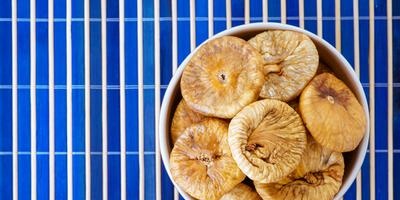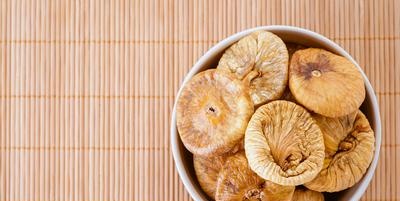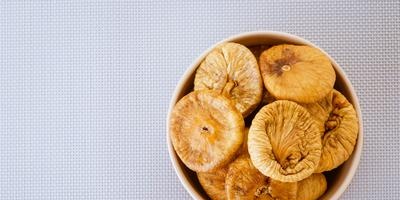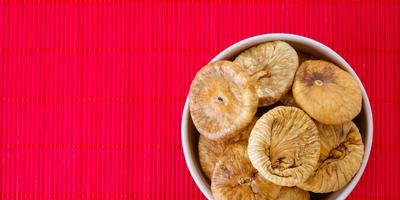|
 One English traveler who visited the countries of the Middle East in Pushkin's time was extremely puzzled when he came to the Turkish city of Smyrna. Residents greeted the traveler hospitably, but no matter what conversation he started with them, they invariably reduced him to figs - figs. One English traveler who visited the countries of the Middle East in Pushkin's time was extremely puzzled when he came to the Turkish city of Smyrna. Residents greeted the traveler hospitably, but no matter what conversation he started with them, they invariably reduced him to figs - figs.
 It seemed that they no longer think about anything, only about their beloved tree. However, the Turks had very good reason for their enthusiasm. Smyrna figs were famous all over the world. It is still appreciated. Many countries buy Smyrna figs from Turkey. We, too. It seemed that they no longer think about anything, only about their beloved tree. However, the Turks had very good reason for their enthusiasm. Smyrna figs were famous all over the world. It is still appreciated. Many countries buy Smyrna figs from Turkey. We, too.
Growing a good harvest of figs is not an easy task. This is a whole science. The fig fruit itself is not a fruit, but an overgrown stalk. The fruits are inside, those very small grains that crunch on the teeth. Therefore, botanists called all this tasty plant with a special word - "syconium". These siconies, and they are edible and inedible, still cause confusion in the minds of gardeners and sometimes lead them to despair.
At one time, the Americans wished to have Smyrna figs in their garden. Very soon, practical farmers got hold of the coveted treasure.
They planted it and began to wait for the harvest. Alas, there were no fruits. Those that were tied fell to the ground. Farmers gathered for a rally. They called the biologist Eisen, the one who brought the tree from Turkey to America. Eisen admitted that he made a mistake by not capturing the fig pollinator - the blastophagus wasp from Turkey. We urgently need to go after her.
- For a wasp? - shouted the farmers. - We have already suffered with this accursed tree! - And they raised such a whistle that the scientist had to get out of the podium.
 There were also nerds who did not believe Eisen. However, time has proved him right, and now the Smyrna figs live in the United States with his assistant, the wasp. Farmers, of course, had to learn a lot, because caring for a wasp is no less difficult than caring for a bee. Wasp lives in two houses. Before getting on female trees and pollinating them, she must obtain pollen. The pollen matures in inedible syconia. They are called kaprygami - goat figs. They appear on male trees. There are three varieties of goat figs: spring, summer and autumn. The wasp must visit all. Only then will she get the pollen. There were also nerds who did not believe Eisen. However, time has proved him right, and now the Smyrna figs live in the United States with his assistant, the wasp. Farmers, of course, had to learn a lot, because caring for a wasp is no less difficult than caring for a bee. Wasp lives in two houses. Before getting on female trees and pollinating them, she must obtain pollen. The pollen matures in inedible syconia. They are called kaprygami - goat figs. They appear on male trees. There are three varieties of goat figs: spring, summer and autumn. The wasp must visit all. Only then will she get the pollen.
So, let's start with the spring ones. They are laid in the fall. And in the fall, the blastophage climbs inside the syconium and lays eggs in flowers. By March, young wasps are born and leave their winter quarters. There is no pollen in them. They are only for wintering. And they are called mamma. Young wasps need to find pollen syconia - the pros. Professionals ripen in the summer. Wasps climb inside and lay a batch of eggs. When the second generation is born, mature pollen is ready at the exit from the syconium. Wasps make their way to the exit and are so loaded with yellow pollen that they cannot fly. They clean themselves for a long time with their paws, scraping off excess load, as house flies do. And now you can fly to female trees and pollinate them, which they do.
Entering the syconium of a real fig, the wasp sneaks over the flowers in the hopes of laying eggs for the next generation. Alas, the flowers here are different and the wasp cannot fulfill its duty. But while he walks and wanders, he will leave pollen. Nature's task is accomplished.
Good for figs and people. For a wasp, it's a disaster. Remains unhappy without procreation. However, nature took care that the insect survived. And now the third, last, generation of goat figs appears on the male trees. This time at the end of summer. It is called Mammoni. Wasps flying from the Professionals visit mammonies, they find there exactly those flowers where you can lay testicles. The circle is closed. By the fall, the next, third generation of wasps will fly out of mammoni along the route: mammoni - mamma. Then, next year, there will be profics again, mammoni again, and so on.
 Such complex mechanics.But that's not all a farmer should know. The wasp is not the only insect that dreams of visiting a cozy syconium. Other, extraneous and completely unnecessary creatures make their way through the entrance. And more often than others - the favorite of geneticists is the fruit fly Drosophila. It would be half the trouble if Drosophila only brought out its larvae there. She brings with her the rudiments of yeast. And the fruits turn sour. We have to throw them away. Now they are trying to develop varieties with a narrower entrance near the fruit, so that Drosophila does not get through. But for now, this is still a dream. Such complex mechanics.But that's not all a farmer should know. The wasp is not the only insect that dreams of visiting a cozy syconium. Other, extraneous and completely unnecessary creatures make their way through the entrance. And more often than others - the favorite of geneticists is the fruit fly Drosophila. It would be half the trouble if Drosophila only brought out its larvae there. She brings with her the rudiments of yeast. And the fruits turn sour. We have to throw them away. Now they are trying to develop varieties with a narrower entrance near the fruit, so that Drosophila does not get through. But for now, this is still a dream.
However, the wasp itself can also infect. Let's say the parasitic fungus Fusarium. And the juicy fruit will start to rot. Observing quarantine, gardeners have to breed figs in one place, and capriffigs in another. Sometimes many kilometers away! As soon as the first harvest of kapryphig - mamma ripens in the spring, they are cut, disinfected from all evil spirits and stored until the appearance of the professors. And with the professionals there is even more fuss. Professionals don't cut it. And no one knows whether wasps have settled there or not. Maybe they didn’t like the summer residence, and the farmer would sell such an empty syconium to his fellow who grows figs. He will hang the trades among the fig trees and get no harvest.
With abuse, he rushes to the seller: deception! And there is no deception, because the seller cannot guess the desire of the blastophage. They found a way out here. Create varieties in which syconia would fall off if the wasp did not settle in them. But there are still few such varieties.
Until all this mechanics was known, the Smyrna figs remained a secret with seven seals. Now the mystery is long gone, although the unsolved problems are dark. But the blastophage has long been established overseas, and American farmers no longer boo biologists. Breeders have remade Smyrna figs in their own way. The best variety - Sari-Lop - they adapted to the new world conditions. The name was left. And then the unexpected happened. Americans were suspicious of the new variety, because they are used to hearing the word "Smyrna" in the name. A competition was urgently announced for the best name, which would preserve the sound of the Turkish city and at the same time reflect the works of breeders from California. A reward of $ 2,500 was announced. The reward came in handy. The coveted name soon appeared. It was combined: Kalimirna. A slice from California and the remainder of Smyrna. The variety was immediately snapped up. It now occupies half of the US orchards where figs are grown. We also have it in the south.
 However, farmers do not like the extra troubles with capriffigi and blastophagous. And then a new problem arises: Can't we do without the burdensome wasp? Can. Not only is it possible, but it is already being dispensed with. There are many varieties that bear fruit without any pollination. There are even more of them than varieties of Smyrna figs. A person who is not very familiar with figs happily seizes on these varieties and laughs at those who, in the sweat of their brow, work on the arrangement of apartment amenities for the blastophagous wasp. But, alas, he receives less wages in the market for his labor. However, farmers do not like the extra troubles with capriffigi and blastophagous. And then a new problem arises: Can't we do without the burdensome wasp? Can. Not only is it possible, but it is already being dispensed with. There are many varieties that bear fruit without any pollination. There are even more of them than varieties of Smyrna figs. A person who is not very familiar with figs happily seizes on these varieties and laughs at those who, in the sweat of their brow, work on the arrangement of apartment amenities for the blastophagous wasp. But, alas, he receives less wages in the market for his labor.
The secret here is that without a wasp, without pollination, the fruits are deprived of several necessary qualities that the consumer appreciates. There will be no nut seeds in the fruits, and it is they that give the smell of figs a special pleasant shade. Connoisseurs have tried more than once to describe this shade, but nothing came of it. The taste is also not the same. Something is missing. We tried to understand what was missing. Not understood. You have to try it yourself. The buyer, however, is not only interested in taste and aroma. Give him also the beautiful pulp. To be blood crimson or fiery strawberry. There is an excellent Adriatic variety that does not need pollination. His figs are delicious, but their flesh turns blood-red only when ... pollinated! Another variety - Dottato - also does without the help of a wasp. But if you want to have bright strawberry pulp, take the trouble to invite a wasp to help.
Therefore, both in our country and abroad, they are now trying to develop new varieties with the expectation of wasp. Although troublesome, it is tasty and beautiful!
But here another problem arises, which experts consider one of the four most important. The point is that many fig lovers who ate a lot of sugar and candy and lost their teeth are now wearing dentures. As soon as such a person chews on the divine Smyrna fig, a few nuts fall under the prosthesis. The person freezes from unbearable pain. He can't even say a word and stands with his mouth open, unable to move his jaw. It turns out annoyingly. Therefore, the sweet tooth wants to death to get figs without seeds. But at the same time, they do not want to be deprived of all the nuances of smell, color and taste. Breeders are still racking their brains unsuccessfully: how to combine seedlessness and quality? How to do without blastophagous and preserve the glory of the Smyrna miracle?
 Observing the truth, it must be said that figs must be able not only to grow, but also to dry. They are kept fresh for only a few days. And this is not an easy task either. Observing the truth, it must be said that figs must be able not only to grow, but also to dry. They are kept fresh for only a few days. And this is not an easy task either.
At the beginning of the last century, one of the fig lovers, the Caucasian gardener N. Dranopulo, complained to the "Garden and Vegetable Garden" magazine: "I make different experiments, but I get not dried figs, but something like ... mushrooms!"
I do not know what the magazine answered to the gardener, but Dranopulo decided to find out the truth, the secret of Smyrna figs himself, and went to their homeland, in the valley of the Meander river near the city of Izmir. Upon entering the garden, our traveler was extremely surprised. The mature figs were hanging from the branches and had already withered so that they were almost good enough to be put in a box for dispatch. When they fell to the ground, they did not crumple like Dranopulo's, but retained their shape, as if they were made of the best rubber. They were saved by the skin, moderately thick and elastic at the same time. There were no such figs in the Caucasus at that time. This was the famous Sari-Lop. Before the shipment, the packers slightly squeezed the withered figs with their fingers, and from this they acquired a square shape, resembling the shape of Turkish delight cubes, so beloved in the East. And then the product was simply called locum.
The modern world, carried away by sweets, sometimes forgets that in the distant past, these sweets were used for other purposes. At least figs. The ancient Egyptians revered figs more than other fruits. However, not so much for sweetness as for medicine. Reflecting on their health, they came to the conclusion that it was all about digestion. And if so, they tried to ensure that the food quickly passed through the intestines. And she didn't stay there for a long time. From this all diseases. They began to look for a product that would fulfill the role of a pusher. And they found him. This is a fig. Since then, the rule in Egypt has been: not a day without a fig! Even the dead were provided with a supply of motor food. They put a basket full of figs in the grave: maybe it will come in handy in the next world.
So: the ideal fig plant? Not certainly in that way. Pickers and packers of figs suddenly develop a skin disease called dermatitis. True, it passes, but one must be careful with the hairs that cover the fruits. They are the culprits. The tree itself is very afraid of dampness and colds. When N. Dranopulo, already known to the reader, arrived on the bank of the Meandra River, he did not find fig orchards on its banks, as he expected. "The fig garden near the river does not give a penny," said the Turks. "We are planting a fig tree on the hills where the groundwater is deep." But even there, in the hills, the figs were not completely safe. Damp, salty air was pouring in from the sea, and then the figs on the branches turned sour, or even rotted altogether.
 But in relation to soil, perhaps, there is no equal to figs. He can grow on the poorest. When birds bring his nuts to the rocks or to the ruins of old buildings, he strengthens there too, using a handful of fine earth that has accumulated between the bricks. It grows even better on a wall than on black soil. Here is what the gardener P. Lesnov from Kakheti told. For several years he tried to grow a fig tree in his garden. But the cuttings did not take root. And quickly dried up. Once he poked a scion under a concrete fence, knowing in advance that he would die. And what do you think? It was this unfortunate shoot that took root and did not dry out.The answer is simple: there was black soil in the garden, and under the fence there was crushed concrete, stones and sand. In the black soil, the tree just lacked sand and stones. But in relation to soil, perhaps, there is no equal to figs. He can grow on the poorest. When birds bring his nuts to the rocks or to the ruins of old buildings, he strengthens there too, using a handful of fine earth that has accumulated between the bricks. It grows even better on a wall than on black soil. Here is what the gardener P. Lesnov from Kakheti told. For several years he tried to grow a fig tree in his garden. But the cuttings did not take root. And quickly dried up. Once he poked a scion under a concrete fence, knowing in advance that he would die. And what do you think? It was this unfortunate shoot that took root and did not dry out.The answer is simple: there was black soil in the garden, and under the fence there was crushed concrete, stones and sand. In the black soil, the tree just lacked sand and stones.
The fate of the figs was not always successful. Especially in the New World. There was a passion for their own, American varieties. Then the fig boom began to subside. The public began to buy again more often imported, Smyrna. And the plantations began to decline. In addition, they were crowded with suburban new buildings. The trees were sawed for firewood, but that was of little use, given the old adage: "Figs have little fire and a lot of smoke!" Perhaps the fig plantations would have melted altogether, if not for one circumstance. In 1971, construction of the California Canal was completed and vast areas for irrigation opened up. But you have to pay for water. And the farmers needed a plant that would recoup the cost of water in the shortest possible time. This plant turned out to be a fig. At two or three years old, he already begins to bear fruit. And brings money to pay for water.
A. Smirnov. Tops and roots
|